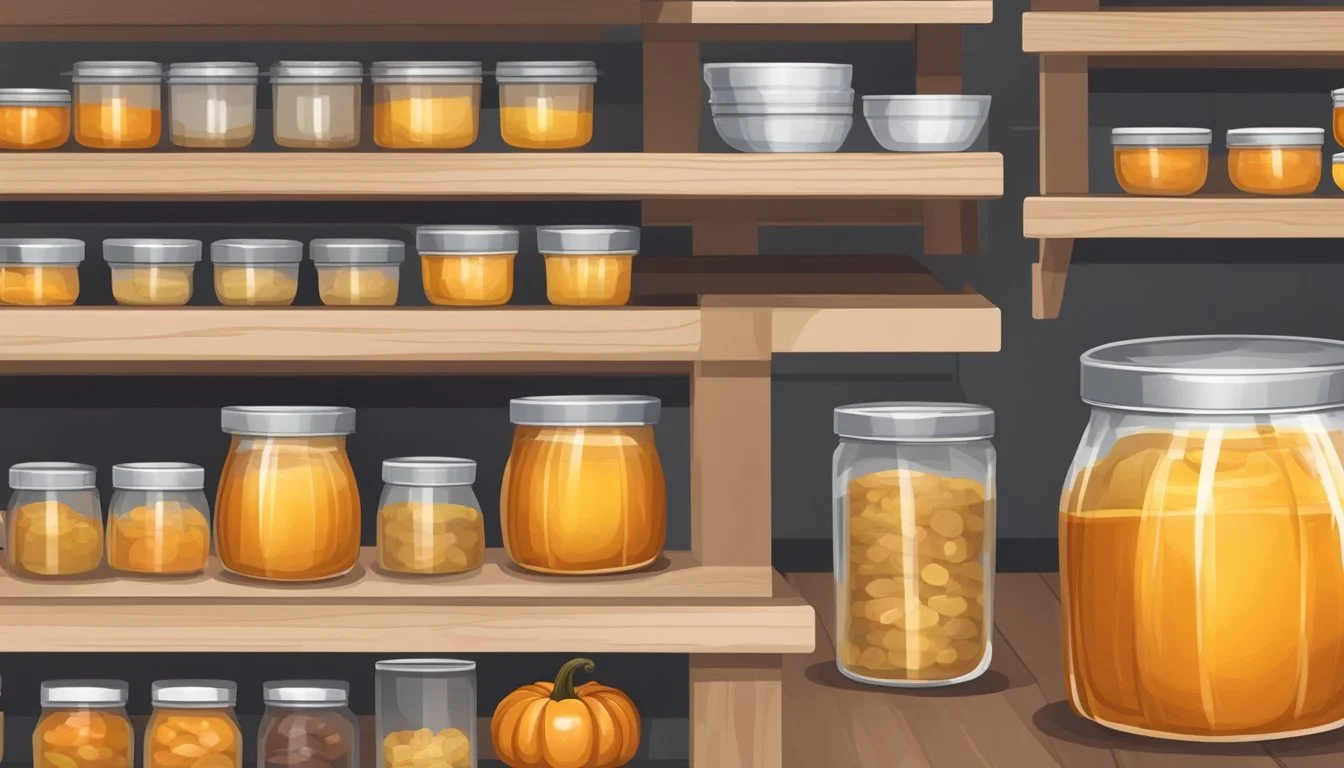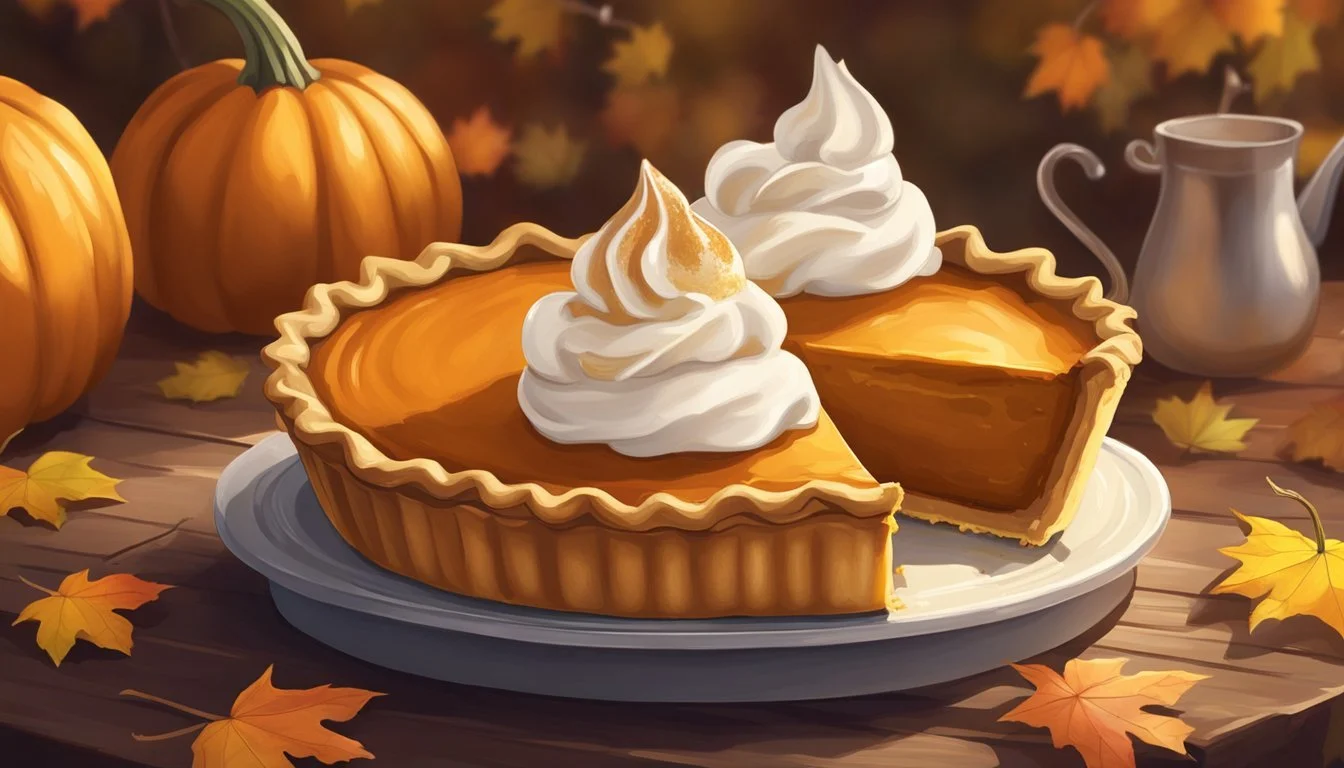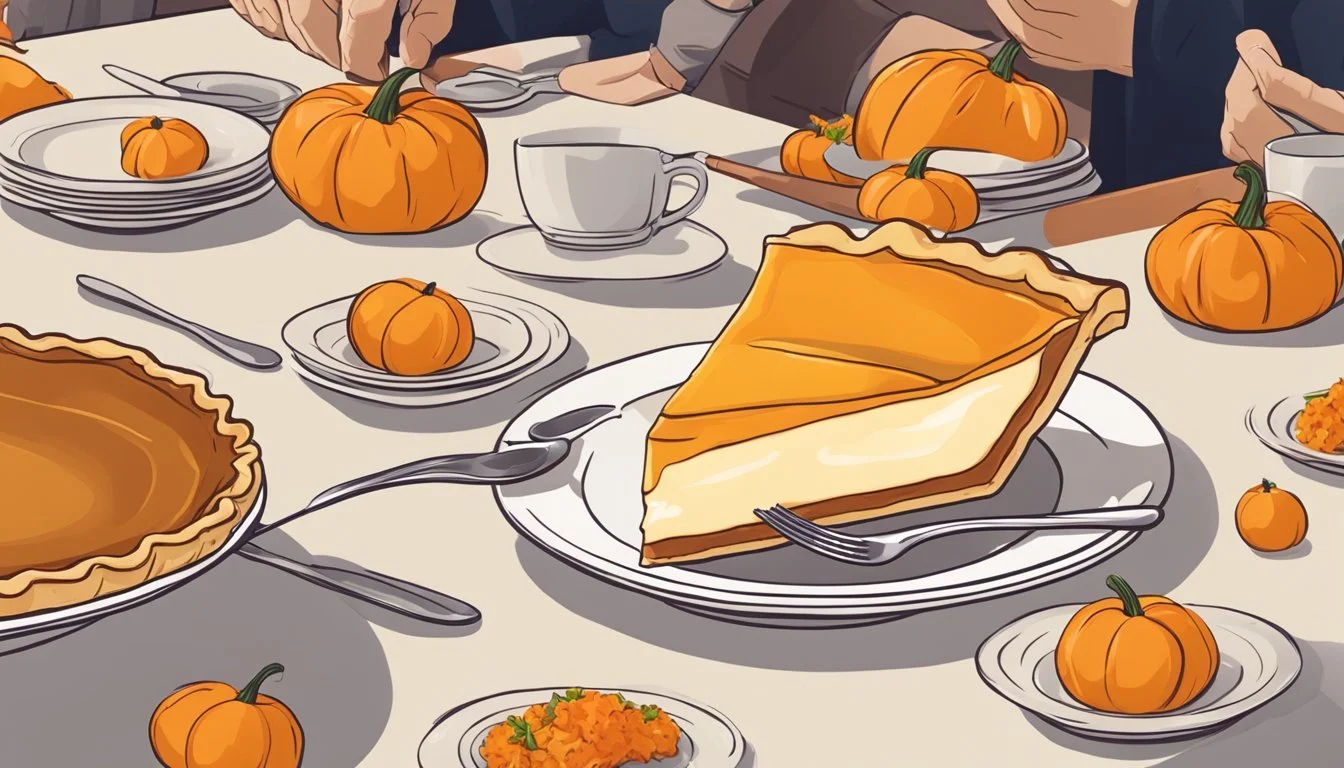Does Pumpkin Pie Filling Go Bad?
Shelf Life and Spoilage Signs
When considering the shelf life of pumpkin pie filling, it is crucial to understand that like any other food product, it can indeed go bad. Canned pumpkin pie filling, when unopened and stored properly, typically retains its best quality for approximately 3 to 5 years but remains safe beyond that time frame as long as the can remains undamaged and free from rust, dents, or swelling. The preservatives within commercially canned pumpkin pie filling allow it to last well beyond its "best by" date, although the quality may diminish over time.
Once opened, pumpkin pie filling's shelf life reduces significantly. It should be kept refrigerated and ideally used within 5 to 7 days. The characteristics of spoilage in pumpkin pie filling can be readily identified through a change in color or the development of an off smell; fresh pumpkin filling should have a rich orange color and a characteristic pumpkin aroma. If there is any visible mold or the texture has changed substantially, it should not be consumed.
When making a pumpkin pie from the filling, proper storage post-baking is equally important. Refrigeration is key to extending the life of the pie, maintaining it within safe temperature ranges of 35-40°F (2-4°C). A freshly baked pumpkin pie should be consumed within a week, especially if it has been made with perishable ingredients like eggs and milk. If mold, discoloration, or an unpleasant odor is evident, or if the pie has been left out for over two hours at room temperature, it should be discarded.
Understanding Pumpkin Pie
Pumpkin pie is a traditional dessert, especially popular during Thanksgiving. It is known for its smooth, creamy texture and rich flavor. The pie combines a unique blend of spices with pumpkin, a key ingredient, resulting in a festive treat that is both comforting and indulgent.
Components of Pumpkin Pie
The primary ingredient in pumpkin pie is the pumpkin filling, which consists of pumpkin puree mixed with a combination of eggs, sugar, and spices such as cinnamon, nutmeg, ginger, and cloves. The filling’s hallmark is its creamy texture and deep, sweet-spicy flavor. The ingredients, when mixed and baked, thicken to create the custard-like consistency that pumpkin pie is famous for.
The crust serves as the foundation for the pie and can vary from flaky pastry to a graham cracker base. It is essential in providing a textural contrast to the smooth filling. The crust is generally baked before adding the filling, to prevent it from becoming soggy. Below is the typical composition of pumpkin pie:
Filling Ingredients:
Pumpkin puree
Eggs
Sugar (granulated or brown)
Spices (cinnamon, nutmeg, ginger, cloves)
Crust Ingredients:
Flour (for pastry crust)
Butter or shortening
Salt
Water or milk
Alternatively, crushed graham crackers and butter (for graham cracker crust)
Types of Pumpkin Pie
Homemade pumpkin pie is often praised for its fresh taste and the cook's ability to tweak the recipe to their liking. Ingredients for homemade pie can be adjusted in terms of type and quantity to alter the flavor and texture to personal preference.
Store-bought pumpkin pie, on the other hand, is widely available, especially around Thanksgiving, and offers convenience for those who may not have the time or inclination to bake. Pre-made pies may contain preservatives to extend shelf life and can be found in refrigerated or frozen forms.
Pumpkin Pie Type Characteristics Homemade Fresh ingredients, customizable, richer flavor. Store-bought Convenient, consistent, may contain preservatives.
Both types need to be stored correctly to maintain their taste and safety, usually refrigerated within two hours of baking or purchase.
The Shelf Life of Pumpkin Pie
Pumpkin pie is cherished for its creamy filling and rich flavors, associating it closely with festivity and comfort. Identifying the proper storage methods and shelf life is paramount for maintaining the pie's taste and ensuring food safety.
Factors Affecting Pumpkin Pie Shelf Life
Temperature: Pumpkin pie is an egg-based dessert and should be kept refrigerated at 35-40°F (2-4°C) to preserve its quality and prevent spoilage. Room temperature storage is permissible for a brief period, generally no longer than two hours.
Preservatives: Store-bought pies often contain preservatives that may extend their freshness compared to homemade pies; however, refrigeration remains essential.
Dates to Consider: The expiration date, best by, and sell-by dates are significant. Consumers are advised to enjoy the pie within 5 to 7 days past the date on the label for optimal quality.
Visual and Olfactory Indicators of Spoilage
Color and Appearance: Changes in color, such as dark spots or any signs of mold, indicate spoilage. A pie exhibiting these signs should not be consumed.
Smell: A sour or off odor is a reliable indicator that the pumpkin pie is no longer safe to eat. Spots or foul odors are clear signs that the pie should be discarded.
By adhering to these storage recommendations and being attentive to visual and olfactory cues, one can ensure that pumpkin pie remains a safe and enjoyable treat.
Proper Storage Techniques
Proper storage techniques are essential to maintain the freshness and prevent spoilage of pumpkin pie. The following methods provide safe measures for keeping pumpkin pie at its best quality.
Room Temperature Storage
Pumpkin pie should not be left at room temperature for more than two hours. After this time, bacterial growth increases the risk of foodborne illness. For short periods, such as during serving, the pie can remain covered on a kitchen counter.
Refrigeration
To extend the life of pumpkin pie, it should be refrigerated within two hours of baking. The refrigerator should be set at a temperature between 35-40°F (2-4°C). When refrigerating:
Wrap the pie tightly in plastic wrap or aluminum foil to keep out moisture and other contaminants.
Place the pie on a shelf where it's not subject to frequent temperature changes, thus avoiding the pie becoming soggy.
A pumpkin pie will generally retain its best quality for about 3-4 days in the refrigerator.
Freezing Pumpkin Pie
Freezing is a suitable option for long-term storage of leftover pumpkin pie. To freeze pumpkin pie:
Cool the pie completely to prevent condensation inside the packaging.
Wrap the pie carefully in aluminum foil or plastic wrap, then place it in an airtight container or a freezer-safe bag.
Label the container with the date to keep track of how long it's been stored.
To thaw frozen pumpkin pie, transfer it to the refrigerator and allow it to thaw gradually. This process can take several hours, so it is best to plan ahead. Once thawed, consume the pie within the next few days to enjoy its full flavor and texture. Frozen pumpkin pie can keep its best quality for about 1-2 months.
Signs of Pumpkin Pie Spoilage
Recognizing the tell-tale signs of spoilage in pumpkin pie ensures both quality and health are not compromised. The two main indicators include changes in texture and the presence of mold, as well as any deviation in the expected odor and flavor of the pie.
Texture Changes and Mold
When examining a pumpkin pie for spoilage, one should pay close attention to any alterations in texture. A pie past its prime may exhibit:
Leaking: An abnormal presence of liquid around the pie.
Watery texture: The filling becomes runny, a common sign of decomposition.
Mold growth: The appearance of fuzzy or colored spots on the surface indicates significant bacterial activity and poses a risk for food poisoning.
Off Odor and Flavor
A pie that exhibits an off odor should be considered spoiled, as this is indicative of bacterial growth that can lead to health issues. In terms of flavor, any departure from the rich, spicy taste typical of pumpkin pie, especially if it tastes sour or otherwise unpleasant, is a warning not to consume the dessert.
Pumpkin Pie Preservation
The preservation of pumpkin pie filling is vital to maintain its taste, texture, and safety. Specific methods for short-term and long-term preservation ensure that your pie filling remains delicious and safe for consumption.
Short-Term Preservation
For short-term preservation, one should focus on refrigeration and proper sealing to prevent spoilage. Leftover pumpkin pie filling must be cooled to room temperature to avoid condensation that could add unwanted moisture. Once cooled, the filling should be transferred to an airtight container. Refrigeration at a consistent temperature between 35-40°F (2-4°C) is essential to inhibit bacterial growth. Covering the surface of the filling with plastic wrap can create an additional barrier against moisture and preserve the quality.
Storage Guidelines:
Cool filling at room temperature to prevent condensation.
Transfer to a food-safe, airtight container.
Keep refrigerated at 35-40°F (2-4°C).
Consume within 3-4 days for optimal freshness.
Long-Term Preservation
For long-term preservation, freezing is the most effective method. Canned pumpkin or homemade pumpkin pie filling without preservatives will deteriorate over time, but freezing can significantly extend its shelf life. Once the filling is cooled completely, it should be packaged in layers, minimizing air exposure, and wrapped in food-safe materials like freezer bags or plastic wrap followed by aluminum foil. Custard-based fillings, which pumpkin pie typically is, freeze well. It's important to note that texture may change upon defrosting, so it's recommended to use frozen filling for baking rather than as a standalone dish.
Freezing Instructions:
Cool the filling thoroughly before freezing.
Portion into layers if desired for easier use.
Use moisture-resistant, food-safe packaging.
Store at temperatures of 0°F (-18°C) or lower.
Use within 3 months for best quality.
Pumpkin pie filling should be enjoyed with confidence in both its flavor and safety. By adhering to these preservation methods, one ensures that their guests will savor every bite of pumpkin pie, whether served immediately or saved for a later date.
Serving and Consumption
When serving pumpkin pie, one should ensure that it yields the ultimate balance of a flaky crust with creamy, spiced filling. A soggy crust can detract from the experience while proper defrosting and reheating methods can preserve the pie’s intended texture.
Safe Defrosting and Reheating
To safely defrost pumpkin pie, one should transfer it from the freezer to the refrigerator several hours before serving, allowing a gradual thaw that maintains both texture and flavor. For rejuvenating a leftover pumpkin pie, reheating is best done in an oven. A pie should be loosely tented with foil and warmed at 350°F for about 15 minutes. This method ensures the crust remains flaky and does not turn soggy, while revitalizing the pie's comforting aroma.
Garnishing and Flavor Enhancement
The addition of whipped cream to pumpkin pie is a classic choice for adding both richness and a light, airy texture. For an enhanced flavor profile, one can infuse the cream with spices like cinnamon or nutmeg. Homemade pumpkin pie filling often contains dairy such as butter or cream, and these ingredients should be fresh to ensure the filling is velvety and sumptuous. When serving at a Thanksgiving dinner alongside staples like turkey, the pie's garnish should complement the overall array of flavors, ensuring a harmonious finish to the meal.







